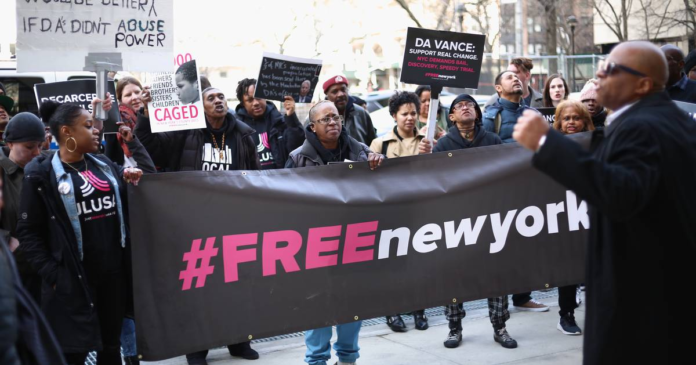ALBANY — Misleading media reports tying rising crime to New York’s cashless bail system played a major role in fueling public opposition to the reforms, says a new analysis from FWD.us, an advocacy group.
FWD.us, which describes itself as a bipartisan organization, looked at how what it deems as mischaracterizations of the bail overhauls led to dwindling public support and directly resulted in lawmakers rolling back portions of the reforms despite a lack of data linking the changes to upticks in crime.
Advertisement
“We hope this report can shed light on the truth about the success of bail reform in New York and hold the media accountable for their role in shaping bail policy,” said Alana Sivin, policy and research manager for criminal justice reform at FWD.us as well as the report’s co-author.
“While many news outlets have unfortunately continued to peddle false narratives surrounding crime and bail reform, the facts show that bail reform has not resulted in a rise in crime,” Sivin said.
Advertisement
Activists rally outside the Manhattan Criminal Courthouse at 100 Centre St. in March 2019. (Alec Tabak/for New York Daily News)
New York’s Democratic-led Legislature approved sweeping changes to the state’s bail laws in 2019, limiting pretrial detention for most nonviolent crimes. The purpose was to reduce the number of people jailed while awaiting trial simply because they are poor.
During the nine-month period between the passage and implementation of the law, public support dropped by 18 points in some polls. Over the same period, FWD.us says, it counted 204 media reports linking crime to bail.
The reforms were amended in 2020 amid rising backlash to allow judges to impose bail for more offenses, including criminally negligent homicide and manslaughter. In the three months directly preceding those changes, media published 454 reports linking bail reform and crime, according to the FWD.us count.
Gov. Hochul and lawmakers included further tweaks in the state budget earlier this year, granting judges greater discretion to impose bail for gun charges and defendants with repeat offenses.
Republicans, law enforcement groups and other critics have made opposition to the criminal justice reforms a cornerstone of campaigns in recent years, accusing Dems of catering to criminals.
The FWD.us report cites city and state data showing that re-arrest rates remained about the same before and after the implementation of bail reform and proponents of the changes point to rising violent crime across the nation, not just in New York, during the pandemic.
Presidents of several NYPD unions address the media in March 2021 on rising crime in New York City and new police reform policies. (Theodore Parisienne)
Michael Rempel, director of the Data Collaborative for Justice at John Jay College, told the Daily News in October that data simply doesn’t back up the narrative that cashless bail has led to higher crime rates.
“We don’t yet have a rigorous, apples-to-apples study comparing recidivism between people assigned to bail and people released due to the reforms,” Rempel said.
Advertisement
Research conducted by academics and independent nonprofits, including Arnold Ventures, shows a link between pretrial detention and higher recidivism rates once people are eventually released.
Republican Rep. Lee Zeldin (R-N.Y.), who narrowly lost last month’s gubernatorial race to Gov. Hochul last month, repeatedly vowed to overturn the reforms if elected. The conservative Long Island lawmaker led the charge against cashless bail during the election cycle, ginning up news coverage by holding near-daily press conferences at crime scenes and slamming Hochul as soft-on-crime.
Hochul has said she wants to see more data following the most recent changes before weighing any additional tweaks to the state’s bail system.
The FWD.us look at media coverage, which follows a similar report issued earlier this year, showed that mentions of “bail and crime” were highest in the months directly preceding the 2020 and 2022 bail rollbacks and around the 2022 election.
During the first quarter of 2022, just before further rollbacks were included in the state budget, there were nearly 400 articles published in New York state linking bail reform and crime, according to the group.
Sivin said the report shows the need for more accountability and a closer look at relevant data when discussing reforms.
Advertisement
“Our hope is that this report can help usher in a new era of more responsible reporting on criminal justice policies,” she said.



